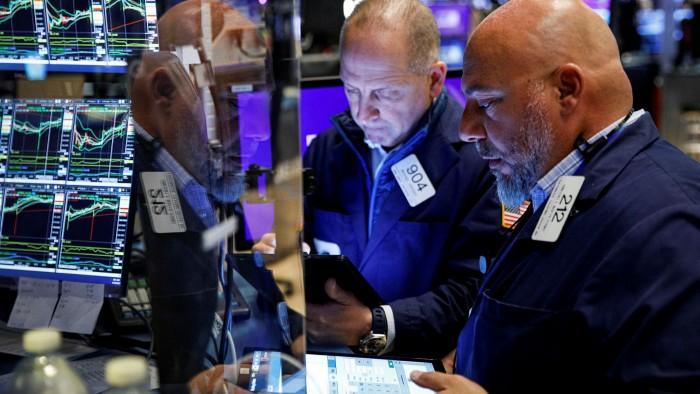Market volatility could portend a retreat of liquidity


Roula Khalaf, Editor of the FT, selects her favourite stories in this weekly newsletter.
The writer is president of Queens’ College, Cambridge, and an adviser to Allianz and Gramercy
As bouts of market volatility have become more common in recent weeks, it is clear that investor appetite to buy on dips, while still strong, will be tested when the US Federal Reserve withdraws support for asset prices.
For now, overall liquidity in markets remains high. While starting to taper, central bank asset buying programmes are still huge. But the sharp swings in markets experienced in recent weeks illustrate a phenomenon that we are likely to see more of: “illiquidity in the midst of liquidity” — a phrase I first heard from Gramercy’s founder Robert Koenigsberger.
The seemingly counter-intuitive notion is that liquidity dislocations can occur within the context of ample overall liquidity.
Having experienced sudden bouts of volatility in recent years, investors seem generally well equipped to navigate their way through it, including by using market drops as a basis for further future gains. Yet the emergence this time round of two factors that were not foreseen just a few months ago complicates matters: inflation and the investability of China and Russia.
Investors now need to assess more carefully the possibility not just of pockets of illiquidity in the midst of generalised liquidity, but also of a retreat of overall liquidity.
Global bond and equity investors have been taken on quite a rollercoaster ride in recent days. Last week’s unsettling fall in stocks was followed by this week’s impressive two-day rally and yet more outsized moves in bond yields.
The immediate causes of this volatility were concern — on health, economic and financial grounds — about Omicron, the new and more infectious coronavirus variant, and the manner in which Fed chair Jay Powell chose finally to retire the gross mis-characterisation of inflation as “transitory”.
The volatility caused by disorderly closing of “pain trades” was amplified by a longstanding structural imbalance: the lack of sufficient risk-absorbing capital in the face of a sudden shift in conventional market wisdom.
This is not just about the multi-year reduction in the willingness and ability of intermediaries (broker-dealers) to act counter-cyclically. It also reflects the greater uniformity of portfolio positioning in the context of protracted Fed-induced market distortions.
Until now, episodes of sudden illiquidity in the midst of liquidity have proved to be temporary and reversible, and for good reason: The Fed’s constant flooding of financial markets with liquidity reinforced the markets’ conditioning to buying the dip, for “fear of missing out”.
With such high market confidence in the “Fed put”, every bout of localised illiquidity encouraged the private sector to extend its leverage to take advantage of a reversible market drop. More and more people got sucked into similar positioning. In the process, the risk of systemic financial instability shifted from banks subject to stronger regulatory oversight to under-supervised and poorly regulated non-bank participants in the market.
This is where the two new global themes come in — inflation and the investability of major emerging economies.
Higher and more persistent inflation limits the Fed’s ability to inject liquidity in a substantial and predictable fashion. It also forces other central banks to become less dovish, resulting in a generalised tightening of global monetary policy.
The more this reality sinks in, the greater the risk to the markets’ own factories of leverage and debt, threatening an additional endogenous tightening of global financial conditions. Omicron amplifies this risk given stagflationary tendencies accentuated by the unintended effects of well-intentioned pre-emptive health measures. This week’s understandable imposition of a vaccine mandate on the private sector by New York mayor Bill de Blasio is just one example.
The question of China and Russia is more complex. The greater the uncertainties about the scale and scope of direct Chinese government intervention in markets, the higher the risks to global capital, especially so-called tourist flows that ended up far from their natural habitat, “pushed” there by highly repressed yields at home. This can also tighten global financial conditions. Meanwhile, the more the west is concerned about threats to Ukraine, the greater the possibility of a destabilising round of sanctions and counter-sanctions.
The hope is that recent market volatility is a simple repeat of past episodes of reversible illiquidity amid conditions of general liquidity. But the risk, which would grow in response to the persistence of high inflation and emerging market uncertainties, is one of a generalised and more permanent receding of overall liquidity.
Comments